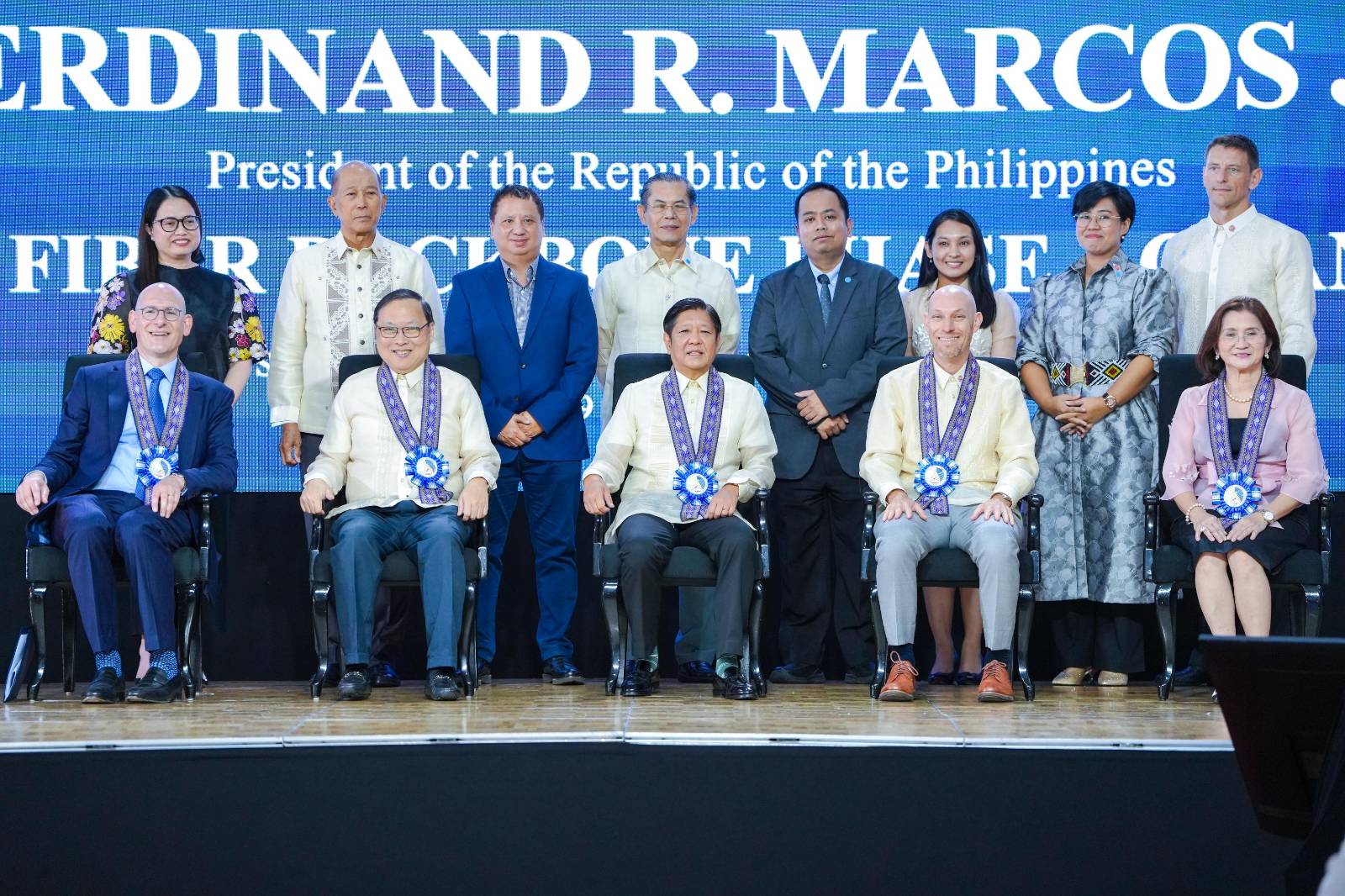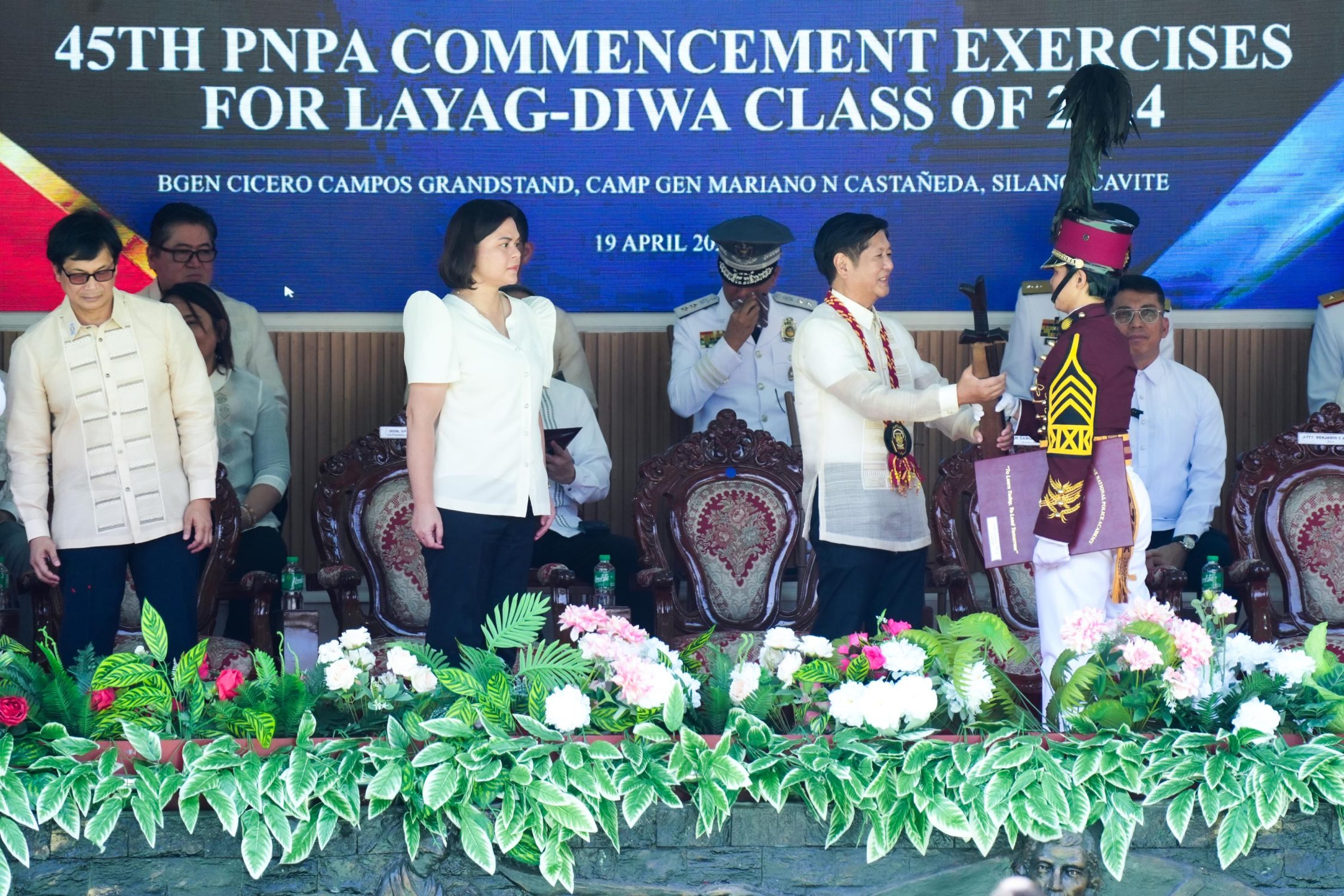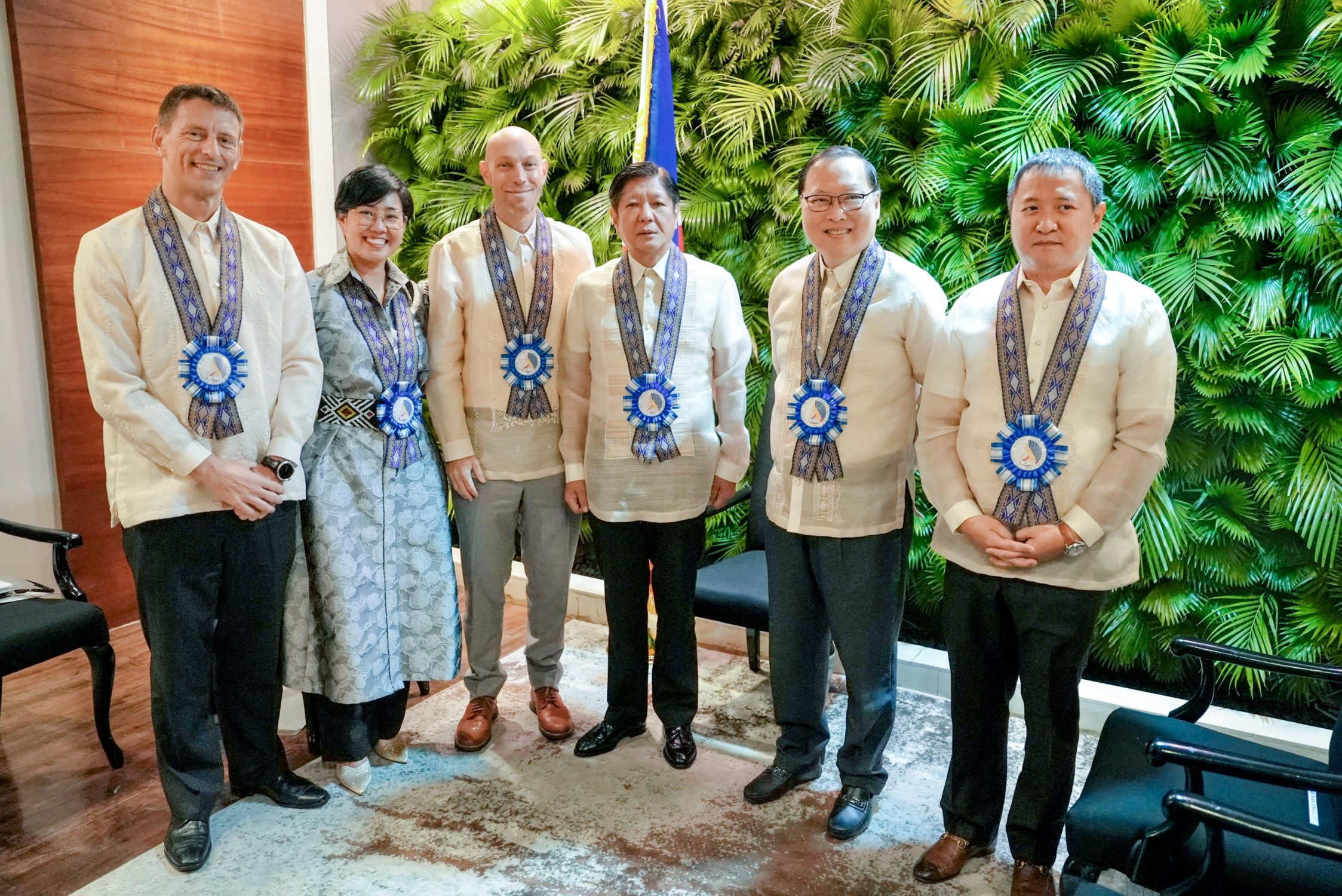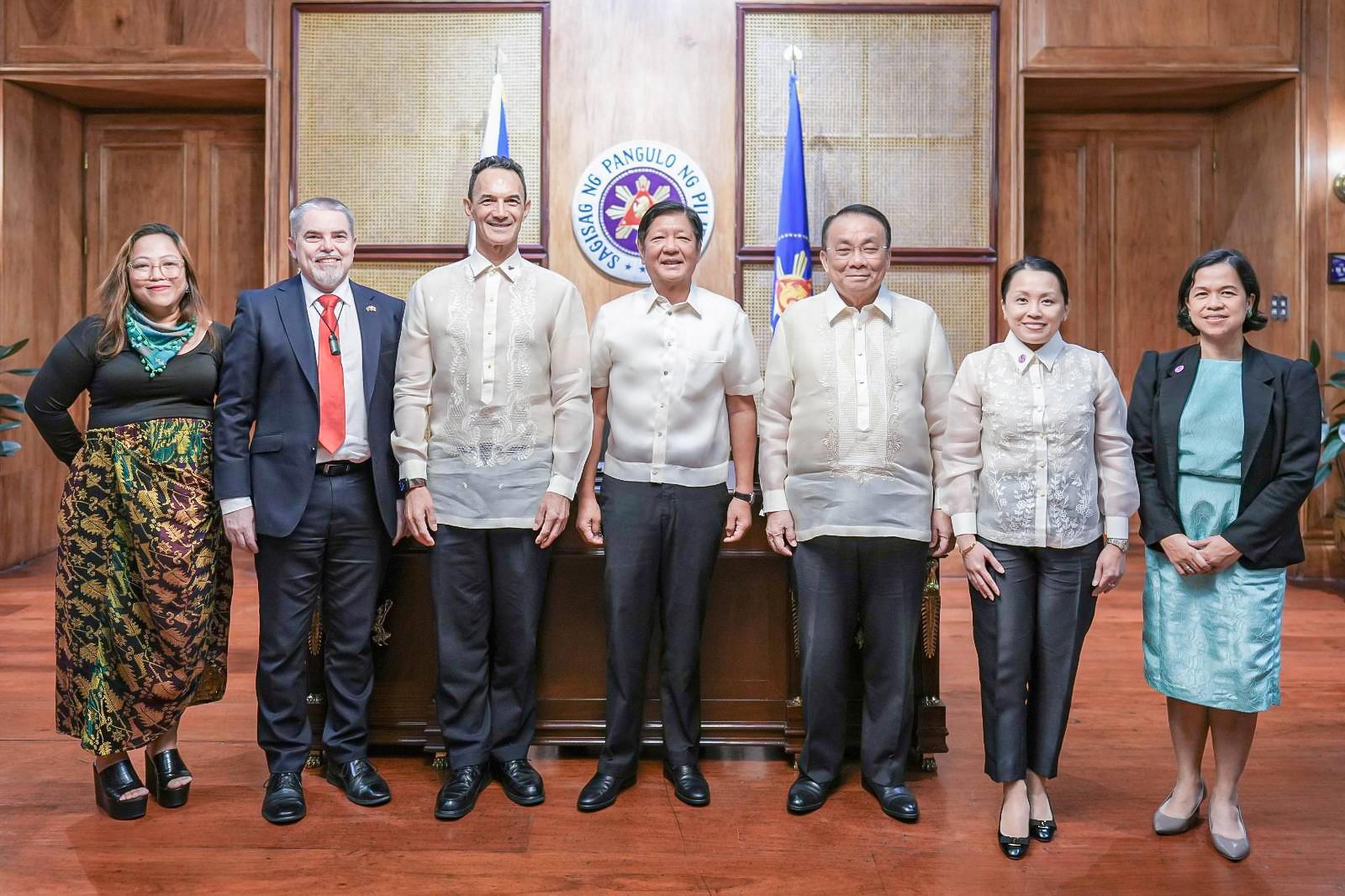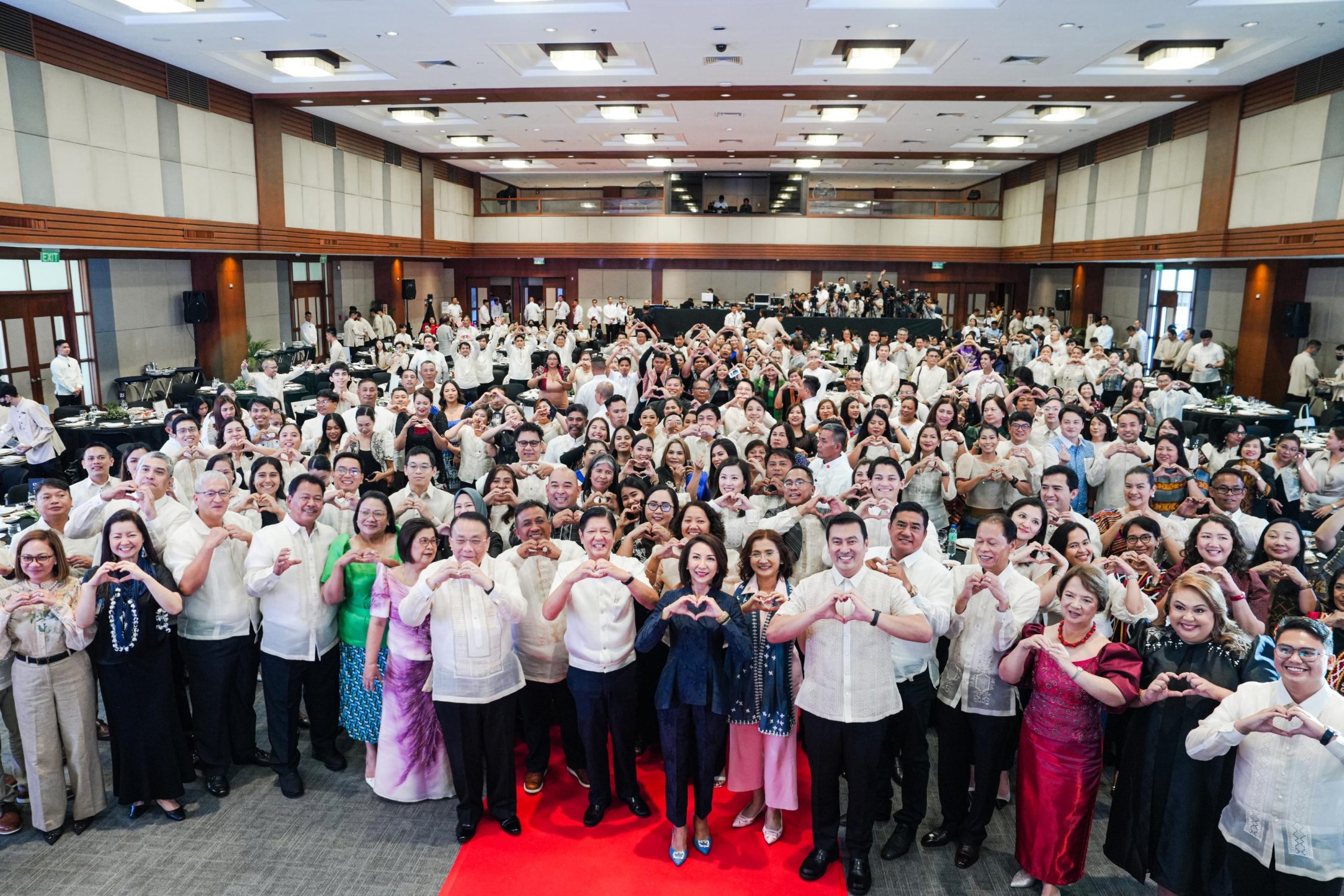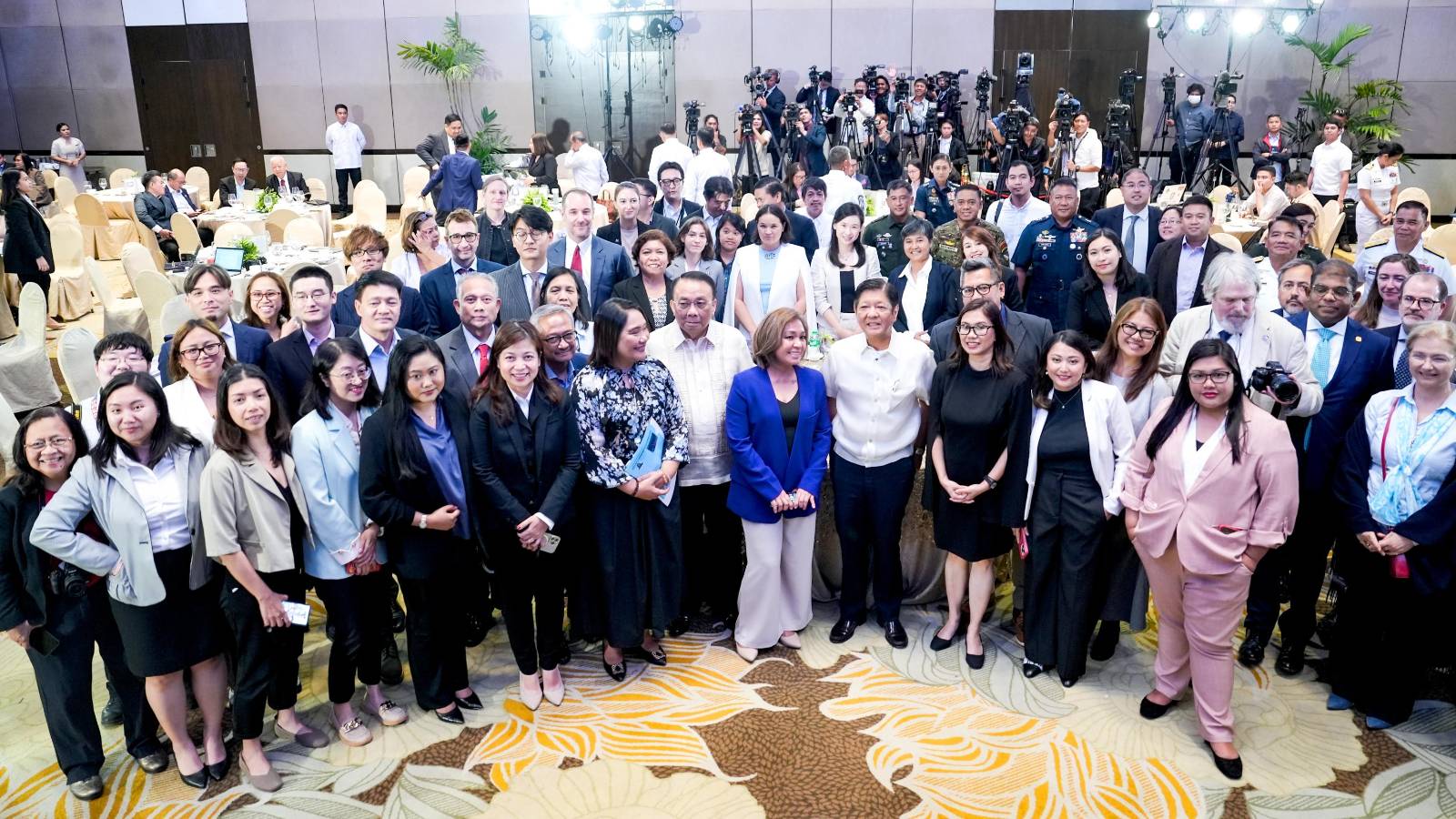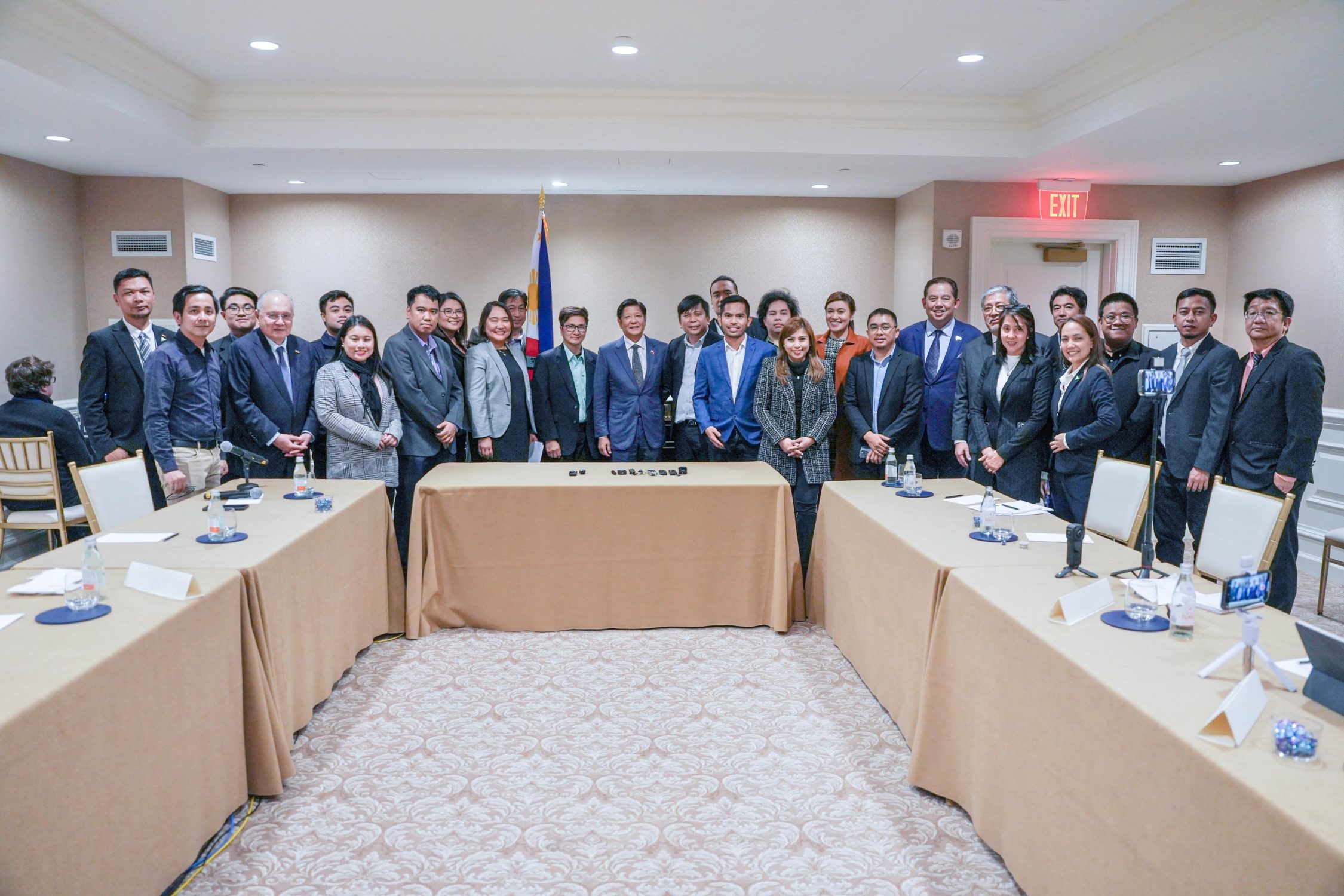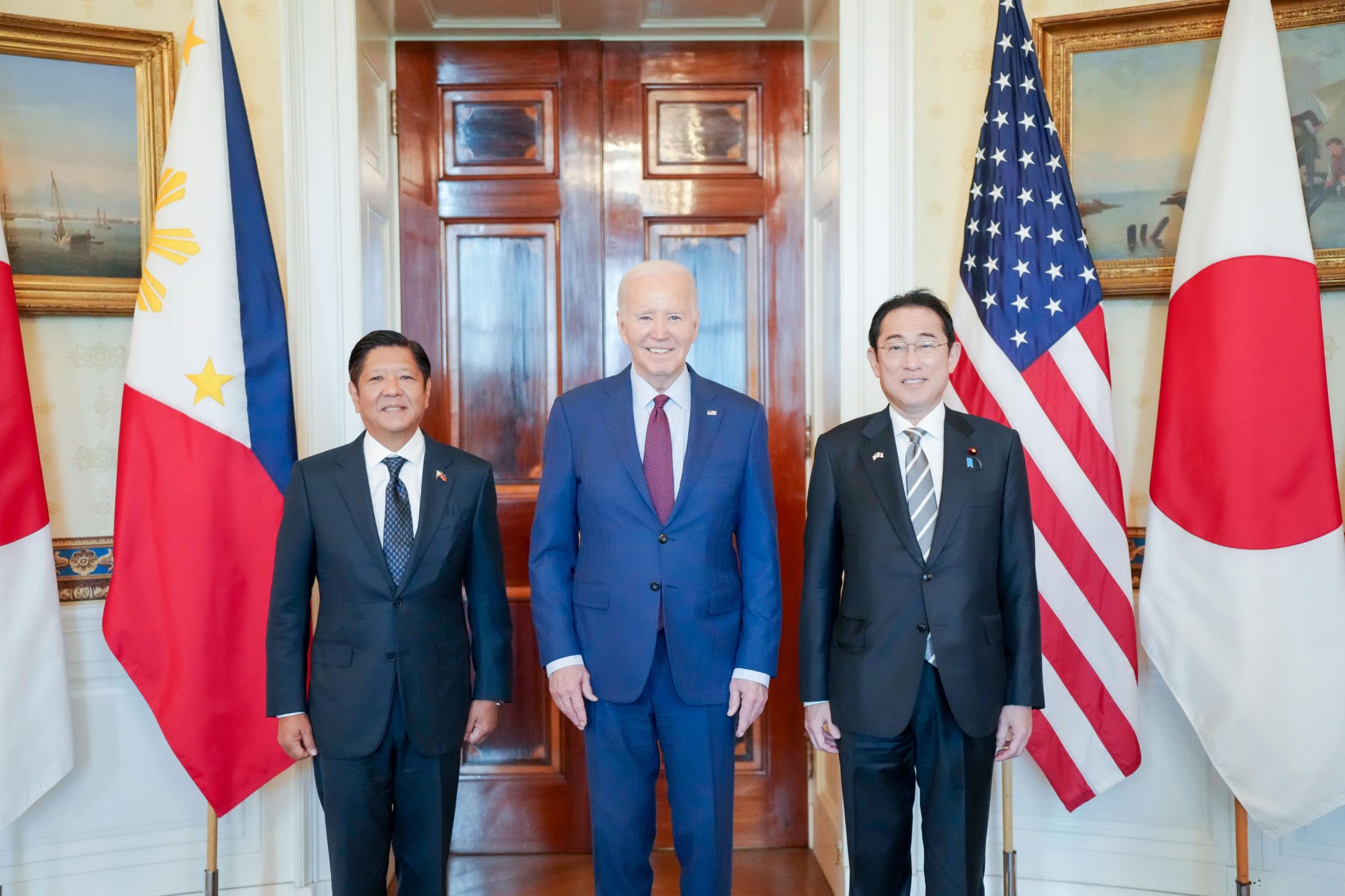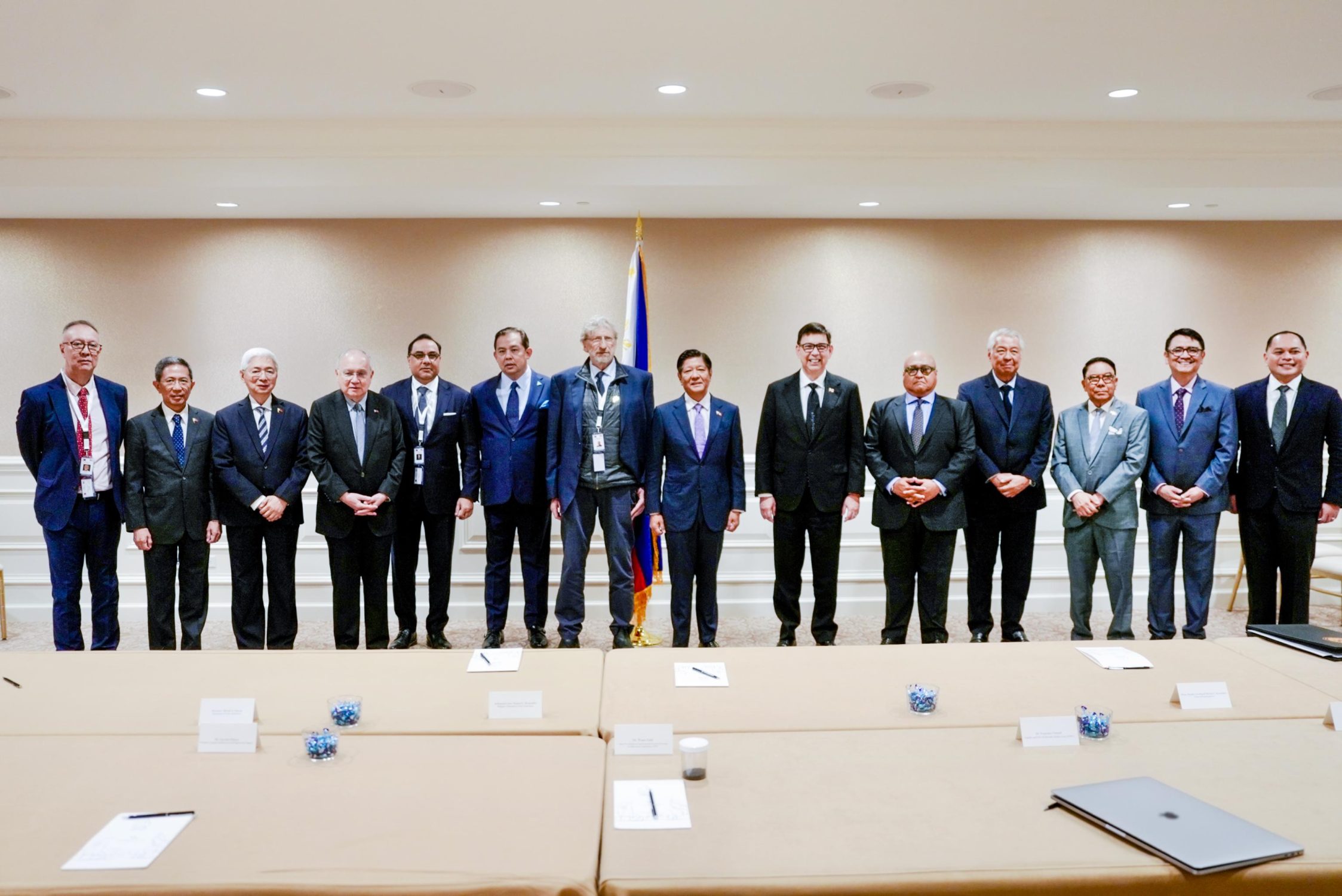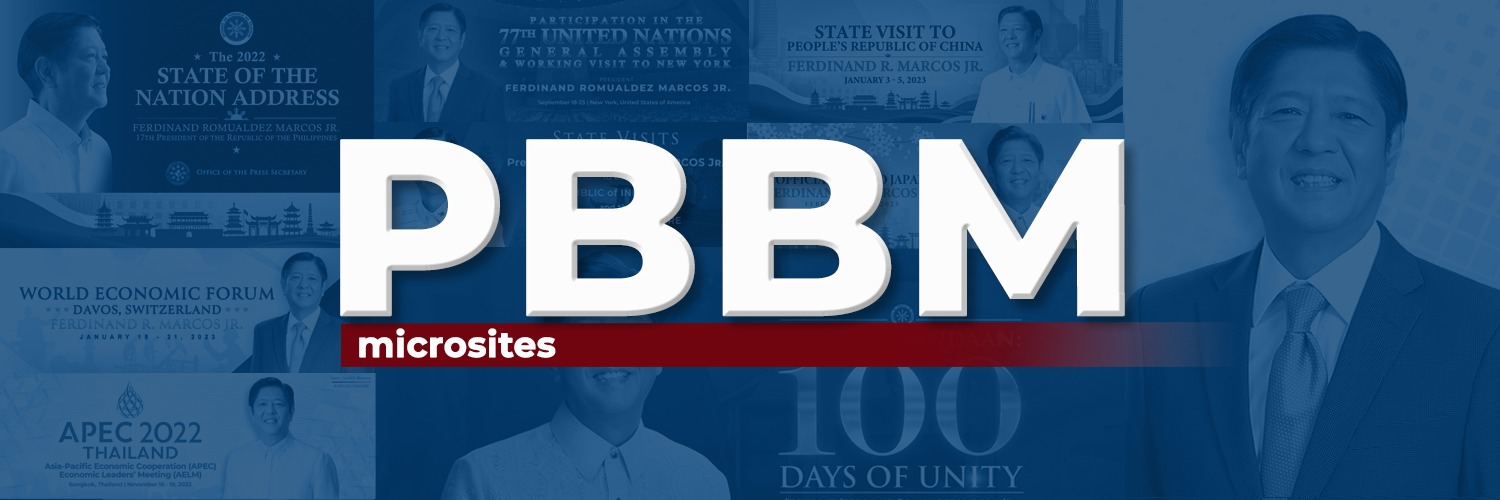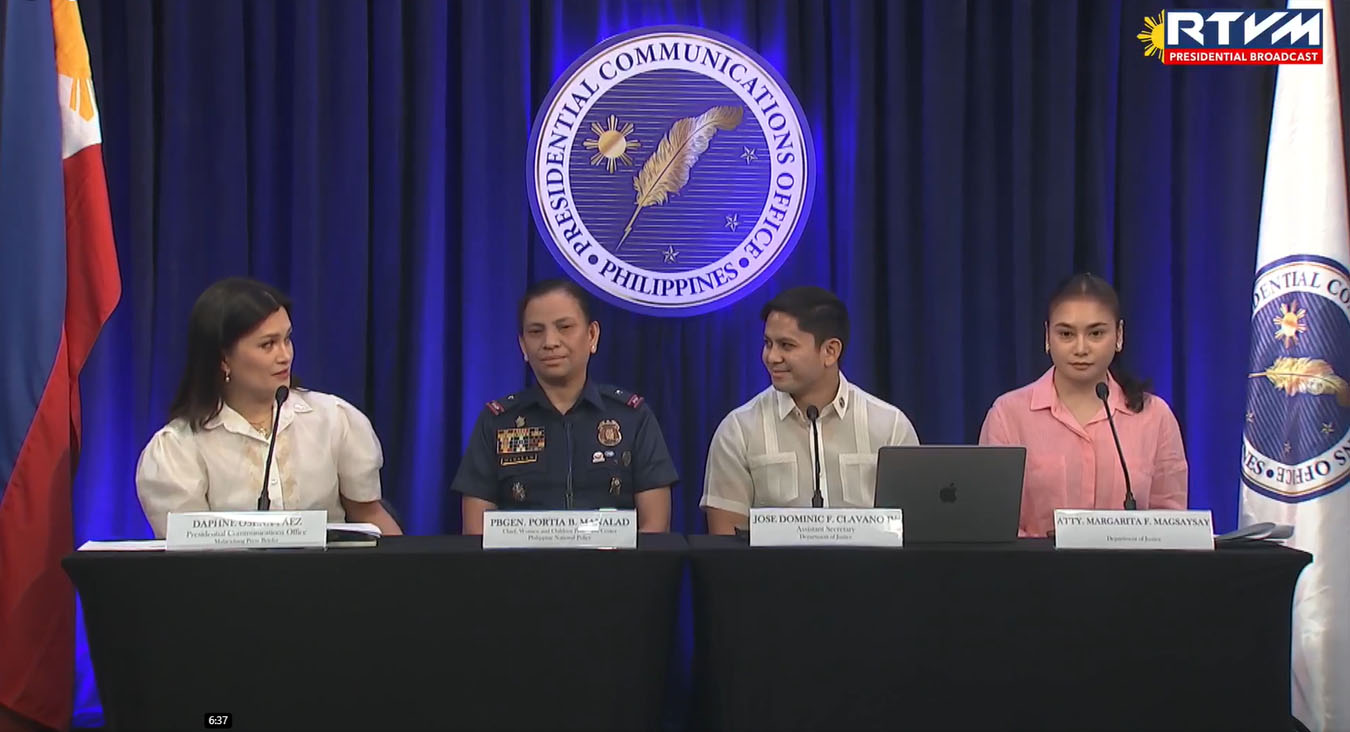Oct. 18, 2016 – Press Conference by PCO Assistant Secretary Marie Banaag and DOH Sec. Paulyn Jean Rosell-Ubial
| Press Conference by PCO Assistant Secretary Marie Banaag and DOH Sec. Paulyn Jean Rosell-Ubial |
| Press Briefing Room, New Executive Bldg., Malacañang |
| 18 October 2016 |
|
OPENING STATEMENTS: ASEC. BANAAG: Good morning, Sweden. Good morning po sa ating lahat. Secretary of Health Paulyn Jean Rosell-Ubial is a medical doctor and a government worker. She graduated with a BS Zoology degree from the University of the Philippines – Diliman and later with a doctor of medicine degree from the UERMMC. She also has a Masters degree in Public Health from UP Manila. She has 27 years of experience as a public health worker, joining the Department of Health central office in 1991 in its expanded program on immunization and later, becoming director III of the Center for Family and Environmental Health. In 2001-2005, she served as assistant regional director of Region VI Center for Health Development. In 2006-2008, she served as regional director in Davao City and Zamboanga City until she became assistant secretary of Health in 2008 up to June 2016. She was also a recipient of the 10 Outstanding Young Women of Cotabato City. With her strong credentials in public service, education and training, there is no doubt, she has earned the solid trust of the President in taking charge of the health situation of the country. We are fortunate to have back as our guest for this morning Secretary of Health Paulyn Jean Rosell – Ubial. SEC. UBIAL: Thank you, Asec. Marie Banaag for that kind introduction. To the members of the Malacañang Press Corps, good morning. The Department of Health is announcing the soft opening of our drug rehabilitation center inside the military camp in Fort Magsaysay in Laur, Nueve Ecija. The facility has been partially finished by October 17, that was yesterday, and our personnel, who were hired for that facility, about 1,000 of them, are now actually viewing the facility and having a dry run on how to manage the patients that will be referred to that facility come November. Our opening of the mega drug treatment and rehabilitation center in Nueva Ecija is expected to be sometime November. The construction of this mega rehab center began soon after my visit to Beijing in September this year, wherein we signed a Deed of Donation with our very generous donor, a businessman from China. Mr. Huang Rulun is the donor of a total of a total of 10,000 patients capacity rehabilitation center or 100,000 square meters and 2,500 beds facility will now be turned over yesterday, October 17 and the remainder 7,500 bed capacity will be turned over by November 16, 2016. Six weeks after the foundation were laid, the building structures gradually took shape and now, almost 50 percent of the facility has been constructed. The right wing of the building, which can accommodate almost 1,000 patients and offices are now ready to be furnished. And as of this press briefing, we already have a donor for the furnitures for this facility. Not the businessman but a local, private corporation from the Philippines. Construction of the left wing of the building and the female dormitory is underway and our donor, Mr. Huang, is a philanthropist who is listed in the Hurun Philanthropy List for 13 consecutive years in China. He is the second on the latest list behind Alibaba Group Holdings, with total donations of more than 97 million US dollars last year mainly for the construction of three high schools. He is a privately held real state developer and has investments in 20 five-star hotels and 10 shopping malls all in China. The regional office in Region III, that’s San Fernando, Pampanga is actually the one in charge in recruitment of our human resources for this facility and they have recruited about 1,000 job order staff for the moment but come January, we have a budget for plantilla items for these individuals that were hired. And we estimate that one to two percent of the drug surrenderers need residential drug rehabilitation or in-patient care. The rest will be referred either to a community-based program or an out-patient rehabilitation program. So there are three tracks for our drug surrenderers. And the Department of Health is now working with local government units to actually train the frontline doctors and health professionals so that we can provide the community-based program as well as the out-patient rehabilitation program. Our goal right now is to establish two more mega treatment and rehabilitation—one more mega treatment and rehabilitation center in Luzon, another in Visayas and another in Mindanao. The budget for the human resources needed for these facilities are already included in our 2017 budget proposal. We are working with local government units, particularly barangays and municipal and city officials that will handle the community-based rehabilitation program, where an estimated over 95 percent to 98 percent of the surrenderers will be having this program. This is in collaboration with non-government organizations, interfaith groups, and volunteers. So that’s the current situation and all these programs of the DOH are actually included in the 2017 budget. Thank you. QUESTIONS & ANSWERS: DEXTER GANIBE (DZMM): Secretary, good morning. SEC. UBIAL: Good morning. Mr. Ganibe: You mentioned na ang kaya lang i-accommodate dito sa mga itatayong rehab center ay one percent do’n sa, diba, tama po ba one percent– SEC. UBIAL: yes, yes, one to two percent. Mr. Ganibe: –one to two percent doon sa kabuuan nung mga sumuko, na mga umamin na mga drug users. Papaano po ang siste na matukoy na sila ay kasama doon sa one percent? SEC. UBIAL: At the moment, we have trained over 1,000 doctors of the local government units and we are accrediting them as the parang addiction medicine or the frontline health workers for assessment of drug dependents. So sila po ‘yung mag-a-assess using the tool that we have prepared whether these drug surrenderers are actually qualified for an in-patient treatment and rehabilitation program or an out-patient and community-based. Mr. Ganibe: May nabuo na po ba ang DOH na tutukoy para doon sa sa, magse-separate doon sa mga kailangan ma in-patient? SEC. UBIAL: yes— Mr. Ganibe: And what are the considerations or batayan? SEC. UBIAL: ‘Yung training, the training of frontline health workers are ongoing but so far, in the last three months, we have trained over a thousand. And the qualifications is actually history of drug use, kung madalas ba silang gumagamit and also, we’re testing them for blood and urine—presence of the illicit drugs in their blood and urine. So ‘yung mga nag positive sa screening, ‘yun ang iko-commit natin for the in-patient treatment. Mr. Ganibe: Last nalang po. Sakali pong hindi pumayag ang isang na-assess na na or in-patient ano po ang patakaran po ng DOH po dito? SEC. UBIAL: Then he will have to be committed to the regional trial court wherein the judicial system will decide whether he or she is qualified for the in-patient. Kasi ‘yung usual natin is that it’s the court that determines that they be committed to an in-patient treatment and rehabilitation facilities. But because of the current large number of surrenderers, we have actually, we do away with the court order so we base our commitment to in-patient care based on the assessment of trained doctors. Mr. Ganibe: Last, last nalang po. Papaano naman po do’n sa mga hindi mapabilang doon sa one percent pero ‘yung pamilya niya ay gusto niyang maipasok doon sa rehabilitation center ng pamahalaan ‘yung kanyang kapamilya? SEC. UBIAL: At the moment, for those who volunteer to be in-patients, hindi po natin sila matatanggap sa ating mga treatment and rehab centers but we refer them to private treatment and rehab centers because they are voluntarily suren— or committing their family members to these treatment and rehab centers and I think that’s also like, they pay for the accommodation of the patients in the private treatment and rehab centers. So ‘yung sa government lang, ‘yung na-assess natin that need in-patient care. Benjie Liwanag (DZBB): Good morning, ma’am. Ma’am we’re talking about one percent. One percent of how many? Ilan na po ba ‘yung nag-surrender? SEC. UBIAL: As of the moment, we have 790,000 surrenderers, okay. So one percent of that is around 7,900. Mr. Liwanag: Okay. Ma’am, ‘yung assessment or classification of these people, sabi ninyo will go to court. Now, papaano ito, ma’am, ‘yung pupunta sa Nueva Ecija will be classified from Region III alone or it will be nationwide also? SEC. UBIAL: ‘Yung—Because our idea for the treatment and rehabilitation of our drug surrenderers is that there has to be a strong component of family support and community support so we really want them to be in-patients in an area where they can be visited by their relatives and friends. So ‘yung sa Nueva Ecija, our plan there is to actually decongest the Bicutan treatment and rehab facility because that facility is designed for 550 but right now, we have over 1,200 patients in that facility so we intend to move some of the patients from Bicutan as well as the nearby treatment and rehab facilities like Tagaytay and also Bataan na medyo overcrowded na to the Nueva Ecija facility but all of them will be on voluntary basis. So kakausapin nung ating mga rehab workers, particularly the doctors and the health professionals, if they are willing to be moved, then we will move them to Nueva Ecija. Pag hindi naman, then we cannot move them and they will have to stay where they are. Mr. Liwanag: Will they shoulder any amount sa paglipat sa kanila, ma’am? SEC. UBIAL: Ah hindi, wala, walang ano. At no cost to the patients. And we’re actually reviewing also for the families to actually visit the facility, maghahanap kami ng bus services from Bicutan or from Tagaytay to bring them to Nueva Ecija on a one day per week basis so that their families can visit them. Mr. Liwanag: Ma’am, on the 1,000 medical workers, papaano ‘yun, how would you divide it into weeks or those 1,000 will be there to supervise and to help this rehabilitation center? Papaano? SEC. UBIAL: Yes, actually they are already onboard or hired, and we’re in the process of training them. And then, aside from the new hire, the 1,000 new hire, we’re also identifying people from the Bicutan TRC, about a hundred of them and Tagaytay TRC, about 50 and another 50 from Bataan TRC to help in the operationalization of the Nueva Ecija treatment and rehab center. So we’re mixing the old personnel with the new personnel so that immediately, the facility is already up and running. Mr. Liwanag: Yeah, ma’am. Sa kabuuan po, magkano ‘yung ballpark figure that—na gagamitin ng Department of Health dito sa mega rehabilitation center, ma’am? SEC. UBIAL: As of the moment, we don’t have the budget in our current budget. So we are actually using our Quick Response Fund, which is used for any eventuality or emergency or unplanned, unforeseen eventuality in the health sector. So we’re using that and we have sub-allotted 130 million to the existing treatment and rehab centers so that they can expand their capacity to double their original capacity and then to Region III, we have sub-allotted around 15 million to hire the new employees. So we’re looking at a possibility that by 2017, the budget will already be included in our General Appropriations Act. Mr. Liwanag: Thank you very much, ma’am. Tina Mendez (Philippine Star): Ma’am as a follow-up. Doon sa 719 surrenderees ano—‘yung classification, ilan ‘yung statistics po nung—nung pupunta lang sa community-based programs and ‘yung mga in-patients? Tapos kung nandoon sila, paano sila pina-follow-up ng government? SEC. UBIAL: ‘Yung statistics natin, we calculate that one to two percent will be in-patients. So that’s between, that’s 790,000. So about 7,900 to around 15,000 for in-patients. So the current capacity of our existing treatment and rehab centers, there’s about 13 of them is 5,300 in-patients. So we’ve actually expanded the existing so that they can double the number of in-patients that they can admit. And for the new treatment and rehab centers we are expecting the one in Nueva Ecija to initially open to 2,500. But they are ready to be expanded to 10,000. So the reason why we’re not operationalizing the 10,000, kasi based on our experience in the current situation ’yung Operation Tokhang, less than 500 lang ‘yung nadagdag sa current capacities namin. So from about 3,000 in-patients at—in our 13 facilities, mga 3,500 lang ang nadagdag in the span of the last three months. So ‘yung projection namin na mag-double hindi nangyari. And the Nueva Ecija facility, we’re ready to open the 2,500. But if very few will be assessed, needing in-patient care, then we will not open the rest of the facility. Ms. Mendez: Sir—Ma’am I’m referring to, how about the other, ‘yung the other drug dependents less—‘yung less than, ‘yung remaining, a little less than 700,000. How is the DOH going to monitor them considering a portion will be going—will be recommended for community-based programs and as you said, the others will be allowed to go home. How is the DOH going to monitor this? SEC. UBIAL: Yes, the community-based program will be run by the local government units so that’s the barangays as well as the municipal. And then we’re training now the frontline health workers, that is the municipal health officers and the nurses at the local level to actually manage the community-based rehabilitation program. And we’ve had a lot of commitment from interfaith groups, from NGOs, to actually assist in the community-based program. So we have devised, shall we say monitoring tool so that every week, we know exactly where the surrenderers are. So this will be running by– this monitoring system and reporting system will be running by the end of October. So we will have a weekly report from all facilities nationwide on the community-based program. Ms. Mendez: Ma’am one more thing. On the budget, you mentioned you tapped the Quick Response Fund under the DOH? SEC. UBIAL: Yes. Ms. Mendez: I understand, if I remembered it right, it’s for emergencies related maybe to typhoons and other emergencies. How did you justify this—this one? SEC. UBIAL: That’s just part of the use of the fund. But the fund is actually used for any public health emergency and the surrenderers that we have now is considered a public health emergency. Ms. Mendez: Under what classification or under what law or– SEC. UBIAL: It’s a mental health problem. Ms. Mendez: So it’s, it’s classified as an emergency? SEC. UBIAL: Yes. Yes. Because there is an increase in the number of cases. So it’s more or less considered a public health emergency. Increase in the number of cases for a particular disease. Ms. Mendez: Did it help ma’am that the President also issued an Executive Order? SEC. UBIAL: Yes, because we don’t know where to get the funds if the—it were assign to us and that’s the mandate of the Department of Health, we didn’t have it as a line item in our budget. It was only the Quick Response Fund that we are actually utilizing. Ms. Mendez: I was just asking kasi baka it’s considered juggling of funds. SEC. UBIAL: No, it’s not. Ms. Mendez: Okay, thank you. Hannah Jane Sancho (Sonshine Radio): Ma’am follow-up doon sa funds sa QRF. Sakali magkaroon tayo ng emergency ma’am, may natitira pa tayong funds to secure– SEC. UBIAL: We can request from NDRRMC. Ms. Sancho: In case– SEC. UBIAL: Yes. Ms. Sancho: Pero na—ibig sabhin ‘yung QRF na-allot natin lahat? SEC. UBIAL: No. Ms. Sancho: Okay. SEC. UBIAL: We have remaining funds for the remaining part of the year. Ms. Sancho: How much? SEC. UBIAL: We, we are actually allocating it– Ms. Sancho: How much po ‘yung remaining nalang po ng QRF ma’am? SEC. UBIAL: The total QRF allotted in the GAA for the Department of Health is 500 million and we have sub-allotted around 130 million. So there’s about 200 million remaining. Ms. Sancho: Alright. Ma’am doon sa community-base. Ang DOH pa rin ang mag-oversee kung magiging successful ‘yung ginagawa ng mga LGUs para tiyakin na ‘yung mga activities or gagawin nila with the surrenderees na hindi talaga sila babalik sa droga. Ang DOH po ‘yung magche-check nun? SEC. UBIAL: Yes, actually we develop the training modules, we capacitate the LGU and we monitor their activities and success rate. So the Department of Health really works with the LGU because our health system is devolved to the local government. Ms. Sancho: Last question ko nalang ma’am. ‘Yung regarding po doon sa—sorry [off mic]—‘yung regarding po doon sa—oo, sa mga patients po. Diba sabi niyo ‘yung court ang magsasabi kung dapat sila ang ipapasok sa rehab po. Ika-clarify ko lang po, may babayaran ba po sila or libre lahat? Yes ma’am? SEC. UBIAL: The patients are assessed so all our rehab and treatment facilities have social workers who are trained like the hospital social workers to classify the patients. So all patients in the treatment and rehab centers are classified according to their capacity to pay and then they are assessed or they are asked to pay according to their capacity. So some of them are actually free and government is providing for—for their accommodation and meals while others are also asked to pay. Ms. Sancho: So depende po sa capability– SEC. UBIAL: capacity to pay Ms. Sancho:—capacity ng tao to pay? So libre ‘yung wala, wala talaga tapos may konting fee ‘yung may kaya? SEC. UBIAL: Yes, and now we also have Philhealth covering the two weeks detoxification treatment of all our treatment and rehab center patients. So it’s covered under Philhealth starting October. Mr. Liwanag: Ma’am, balikan ko lang ‘yung rehabilitation, ilang buwan po ito or taon? SEC. UBIAL: The average—the, shall we say, the range is between six months to twelve months. But some patients go beyond twelve months so they are assessed on a case-to-case basis. Mr. Liwanag: Thank you, ma’am. Rosalie Coz (UNTV): Good morning, Ma’am. Nabanggit niyo po kanina ‘yung iba pang tatlong mega drug rehabilitation centers na ibi-build. Na-determine na po natin kung ano-anong military reservation and karamihan po ba dito ay through deed of donation din? Kasi last week may na-mention po ‘yung Chinese Ambassador na may 120,000 square meters din po na for donation po ng isang Chinese businessman. SEC. UBIAL: Yes, the—the upcoming projects for the mega treatment and rehab centers will be inside military camps also. We’ve identified the camps but as of now, we have not had, like firmed-up commitment from the donors. So, wala pa pong construction other than the one in the Fort Magsaysay area. So marami pa pong indications from other donors, particularly rin mga local businessman. But as of now, wala pang other constructions that are ongoing. Mr. Ganibe: Secretary, clarification lang. Pag sinabi nating soft opening, nagtatanggap na po ba ng mga patients? Sec. Ubial: No, ang soft opening is just to have the employees and the health workers go through the entire facilities so that they can map-out the situation. Mr. Ganibe: So kailan po tatanggap ng unang pasyente? Sec. Ubial: The patients will be transferred by November. That will be the main opening. Mr. Ganibe: Mid-November? Sec. Ubial: Mid-November, yes. We will invite you there. ASEC. BANAAG: Thank you, Secretary. Paborito ka namin dito sa briefing room. I’d like to give updates on three points: On the Brunei trip of the President. It is said that a during the Brunei trip, both governments, the Philippine government and Brunei, have agreed to deepen cooperation in various areas of development such as trade and investment, maritime security, achieving lasting peace in Mindanao, and building a stronger Southeast Asian Nations. In line, in the light of the holding of the ASEAN 2017. And of course, the postponement of the barangay elections. According to Executive Secretary Medialdea, it was already signed by the President. But he just had to wait for the courier, the aircraft that would bring home the signed law and for proper transmittal to the proper offices. And the third point, as to the Marcos burial. The President is so clear about him respecting the decision of the Supreme Court on that matter. Sweden, we’ll entertain around three questions. Mr. Ganibe: Clarification lang, Asec. The postponement of barangay elections was signed in Brunei or in Davao? ASEC. BANAAG: It was not said as to whether it was signed in Davao or Brunei. But we—Executive Secretary Medialdea is awaiting the parcel for proper transmittal. So we’ll wait today para ma-transmit po ‘yan sa, sa proper channels. Official proper channels. Ms. Mendez: Ma’am, how was the EO sent? Private package? government-to-government? How? Can’t it not just be faxed? Sent through fax? ASEC. BANAAG: That—that I cannot comment because– Ms. Mendez: LBC, Fedex? ASEC. BANAAG: No, perhaps not, perhaps not. Yes, yes. I’d rather not comment because I don’t know how it reached the President. But definitely, it should come today. Ms. Mendez: So, let’s clarify. The President had with him the draft copy while he was on his way to Brunei? ASEC. BANAAG: That too, the details of that, to whether he was holding it before he left, or whether it was brought to him by other delegation to Brunei, that of course we don’t have any details on that. Ms. Mendez: We’d also be interested ma’am if it was signed while en route to Brunei? ASEC. BANAAG: Maybe not. Ms. Mendez: Thank you. Leila Salaverria (Philippine Daily Inquirer): Ma’am on the Supreme Court case. Does the Palace have a tentative schedule on where the burial—when the burial will happen in case the Supreme Court allows it? ASEC. BANAAG: Well so far there are no official pronouncements as to the exact date yet on the—on the Marcos burial. No exact date yet. Ms. Salaverria: Are there any tentative preparations in case mag… ASEC. BANAAG: So far, wala pa because we don’t want to preempt the decision of the Supreme Court. We don’t know of course the decision of the Supreme Court so we will wait for the decision of the Supreme Court. Mr. Ganibe: Phone-in question. ASEC. BANAAG: Phone-in talaga ha. Mr. Ganibe: Yeah, question po, may we get your reaction na papayagan ni President Duterte and joint war games sa Russia and China and Philippine forces? Can you have a reaction? ASEC. BANAAG: Russia and China. So far, wala pang official statement si Presidente as to kung papayagan niya o hindi. We will wait for further announcement…Sorry? [off mic] Mr. Liwanag: Yeah, it was mentioned in one of his interview. ASEC. BANAAG: If he’s interest—If the President interested and the official diplomatic communications will be pushed through, then I guess the DFA would be the right department to comment on that and the, of course, the Department of National Defense. Ms. Sancho: Palace comment doon sa Palace—a Pulse Asia Survey na mas prefer ng mga– ng taong bayan na tutukan ng pamahalaan ‘yung more jobs para sa—at tsaka ‘yung wage hike, wage hike at tsaka dagdag trabaho para sa mga Pilipino? ASEC. BANAAG: Lahat naman, lahat naman tututukan at the same time, kung pwede lang. Kaya wala namang mas mabigat or ito isa-santabi natin. So with that, the Pulse Asia Survey, the government would acknowledge kung ano man ‘yung pulso ng bayan as to it. Kasi nga the President is concerned, mas mas malasakit at pagbabago ang gusto natin. So mas maraming maaapektuhan pag–we would acknowledge kung ano, saan man nanggagaling ‘yung Pulse Asia Survey. Vanz Fernandez (Police Files): Yes ma’am, good afternoon. Last time President Duterte revealed that NDF, political arm of the CPP, had insisted on the withdrawal of US and cancelation of joint military troops exercises as a condition for peace. Would the President rather believe the communist than the former President FVR. Any reaction on this? ASEC. BANAAG: Is it the comment of FVR? Ms. Fernandez: Yes. ASEC. BANAAG: Last Saturday in his column? We would not preempt but we acknowledge lahat ng comments po ni former President Fidel Ramos. And of course, his presence and his being with the team, we acknowledge lahat ng opinions po niya on this matter. It is not a matter of choosing between sino ba ang mas—mas matimbang. But we will acknowledge lahat po ng constructive na opinions ni FVR po on that matter. Ms. Fernandez: Thank you, ma’am. ASEC. BANAAG: Maraming salamat po. Sweden, maraming salamat sa ating lahat. |
| SOURCE: PND – Transcriber |





